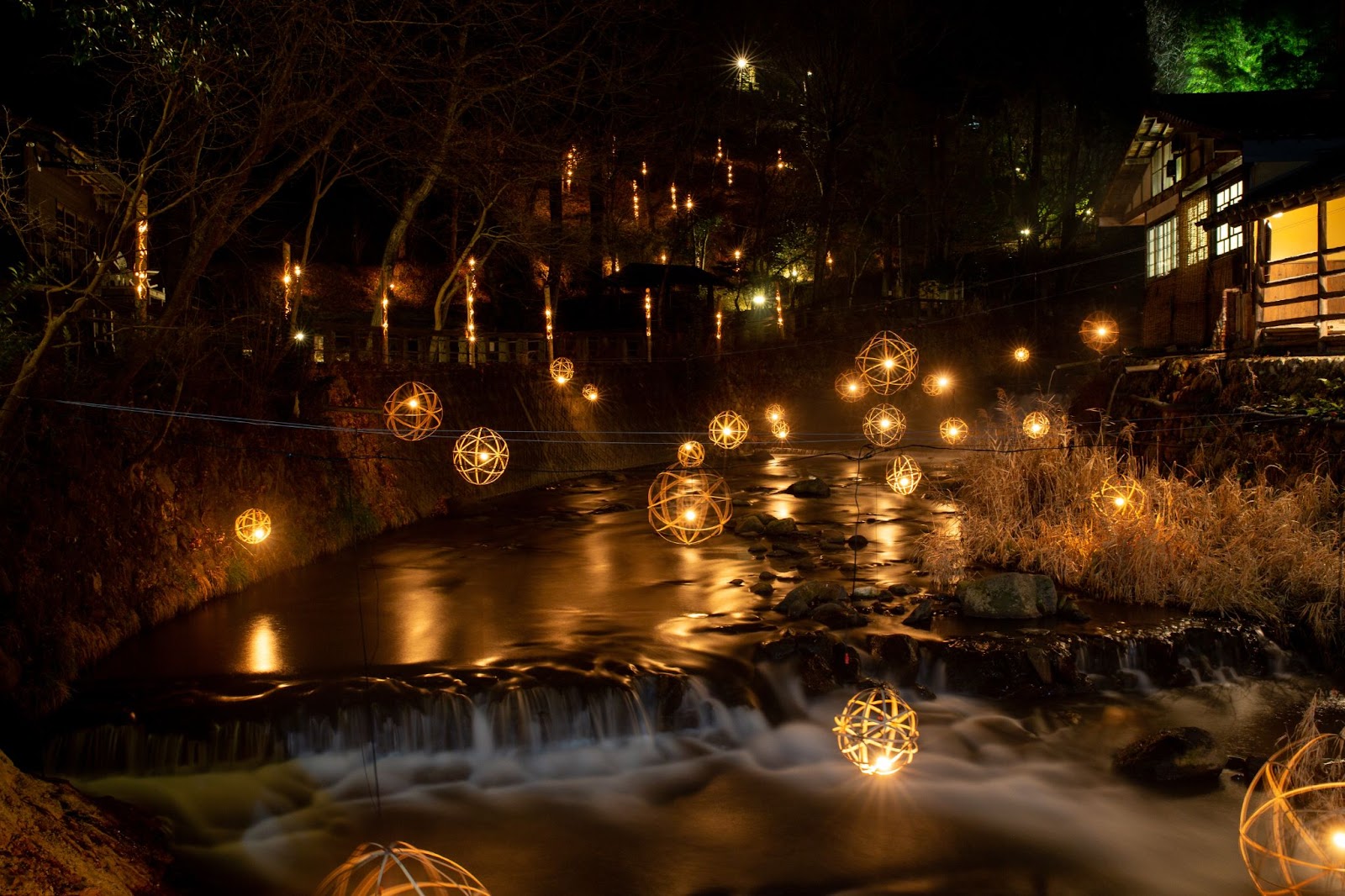Recent news has labelled Japan’s hot springs, known as Onsen, as the wellness trend of 2024.
With this in mind, the experts at Japan Rail Pass have compiled a guide to Japan’s hot springs, and how they can benefit your physical and mental wellbeing, as well as some of the most popular Onsen destinations in Japan.
A guide to Japan's traditional hot springs, and their benefits:
1. The unique minerals within the water hold various medicinal qualities.
Onsen can contain numerous different minerals such as calcium, sodium bicarbonate, sulphur, and iron. This not only improves general blood circulation and oxygen flow but also provides a range of health benefits.
Specifically, the sulphur and calcium within these hot springs is particularly beneficial for those suffering with dry skin conditions such as chronic dermatitis (eczema), or psoriasis. Sulphur can also help to reduce Hypertension (high blood pressure) and help Arteriosclerosis, a type of vascular disease.
Onsen that is high in copper, magnesium, and iron, can help to improve anaemia and the menstrual cycle. Due to this, they are sometimes even referred to as “Kodakara no Yu (childbirth ONSEN)” because of their effectiveness in treating menstrual disorders.
2. The physical effects of heat, flotation, and the water itself.
Alongside the mineral benefits, Onsen offers numerous benefits from the water itself. The water can allow you to feel lighter, as though you can float, which can help to release stress, tensions, and relax your whole body.
The heat from Onsen can also help to relieve muscle or joint pains, as the heat of the water expands the blood vessels, helping to decrease inflammation and pain from aching and swollen muscles.
Despite the fact that once you’re in the Onsen you won’t be moving much, the thermal heat it produces makes it an energy consumption activity which can speed up your metabolism. A 20-minute session in an onsen with 42-degree Celsius water, has been found to burn over 200 calories.
3. Location: the effects of the natural environment.
The effects and benefits of Onsen therapy are said to differ between geographical locations, such as mountain areas and ocean areas.
An Onsen that is located at high altitudes (over 1,000 metres above sea level), is good for energetic people as it can stimulate bodily functions, whereas an Onsen that is located at middle altitudes (up to 300 metres) is good for those suffering with insomnia or high blood pressure, and those who need rest.
However, an Onsen situated in ocean areas can be beneficial for those with chronic fatigue, the elderly, and those who may be in the process of recovering from illnesses, as this environment has a warmer, gentler climate.
The most popular Onsen (hot spring) destinations:
1. Kurokawa Onsen, Kumamoto
Located in the middle of Kyushu, Kurokawa Onsen is known for being one of the most scenic hot spring destinations in the country. Visitors can purchase a special "wooden tegata pass” that allows them to try out several of the different hot spring baths in town.
The town itself has made an effort to maintain a pleasant, traditional atmosphere in the spirit of its bygone days. You'll find a townscape celebrated with natural colours and materials, wooden buildings, earthen walls, and stone steps. There's a river flowing through to complete the scenic picture, lit up with glowing lanterns.
2. Beppu Onsen, Oita
Beppu is known as the hot spring capital of Japan, boasting the largest volume of hot spring water in Japan. A wide variety of baths are offered in Beppu, Oita, such as mud and sand baths.
Hyotan Onsen is a public bathhouse offering a wide variety of natural spa-like experiences, all driven by a local hot spring. It offers both indoor and outdoor baths, plus a waterfall feature, where you can get your shoulders massaged by the cascading waters. Visitors can enjoy both steam baths and sand baths here, where the sands are heated by natural thermodynamics.
3. Kusatsu Onsen, Gunma
Kusatsu Onsen is one of the most famous hot spring resorts in Japan, and is known for its warm acidic water, which is sourced from underground streams heated by geothermal activity. It is so hot that a special stirring procedure is used to cool it, rather than adding cold water, which would dilute the potency of the minerals. This stirring method is called “yumomi” and is even exhibited as a performance at certain times.
4. Hakone, Kanagawa Prefecture
Hakone’s hot springs are situated in Kanagawa Prefecture, and offer visitors a combination of tranquillity, culture, and a beautiful landscape. Its proximity to Tokyo is a bonus, alongside its amazing views of Mount Fuji. Hakone offers a variety of hot spring resorts, each offering unique bathing experiences.
Haroun Khan at Japan Rail Pass provides expert commentary on the popularity of Onsen, as well as tips on etiquette: “Hosting over 27,000 Onsen across the country, Japan is famous for the best hot springs in the world.
“Onsen can be traced back thousands of years within Japan’s history and has recently become a popular travel and wellness trend, as people look to experience the various healing qualities of these hot spring destinations. If you plan to visit an onsen, it is a good idea to research the etiquette required and check the rules and regulations for the onsen you are visiting.
“Some onsens have rules about displaying tattoos for example, so it is always best to check ahead of time.”











